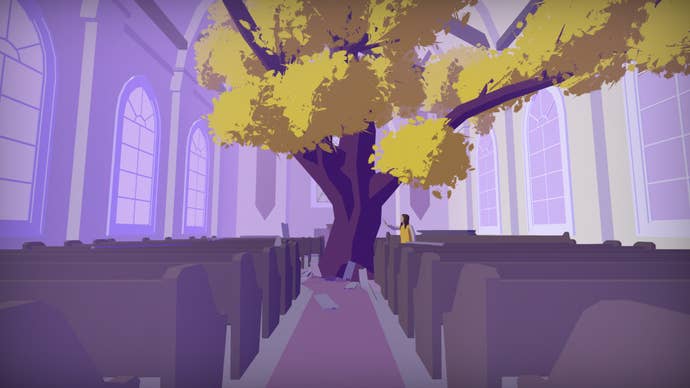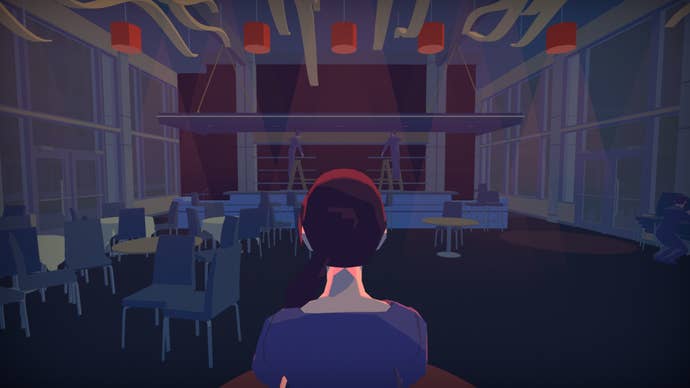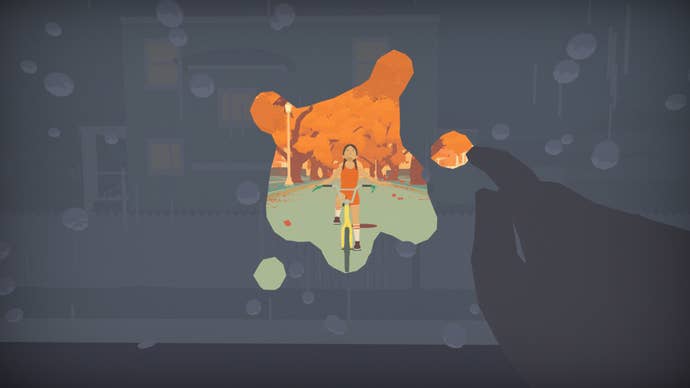It is impossible to get your head around memory.
It’s intangible, yet all-powerful.
It can be like living with a ghost, but the ghost is Arnold Schwarzenegger.

An open-world affair, but an endlessly glitchy one.
Landmarks disappear and shift.
And wherever you go, you’re always at the centre of the map.

I do not want to play this game.
Hindsight review
But what about a game exploring someone else’s memories?
What form would that take?

What problems might it run into?
Hindsight is the story of a woman returning to the family home once her mother has died.
She packs her mother’s things, moving room to room, and then she leaves.

That’s one story.
The form this montage takes, though, is more complex.
I would say that Hindsight deals in turns, ghosts and windows.

Others are objects - bags, tyre swings, an awful lot of knives.
choose the object, or move around it enough, and it becomes a window onto the next scene.
Click through the window and the story continues, but you’re somewhere else.

What Hindsight is getting at, I think, is the way that memory makes these odd little hops.
This then that then this.
Our conversations are made of stepping stones.

So yes, Hindsight nails that.
In one scene a kettle reveals an ancient memory of the family in the kitchen.
All I have to see is a toast rack and I’m lost for ten minutes in melancholic reverie.

So lucky, really, that toast racks are out of favour these days.
But Hindsight runs into trouble quite regularly.
Some of these clickable objects are very small - hence the cursor, perhaps.

But hunting around for what amounts to scene transition triggers is not the game at its best anyway.
Hunting around for triggers kills the flow and makes the game feel choppy.
Sorry, another problem.

Rather than making things feel more personal, it somehow renders sequences generic.
It also diminishes the player’s role.
What are these people feeling?
What might they do next?
How might they be misunderstanding each other?
When the voiceover pops in to answer these questions - “I was desperate for praise!”
- it simultaneously irradiates any of the intriguing ambiguities.
The more I played, the more I managed to dial into the things that Hindsight does really well.
My own narrator took a welcome break.
The daughter and the mother clash.
The daughter wants things, the mother wants other things.
(The game is at its most precise and penetrating when it’s examing this theme.
It’s a generous and enlightening game in this regard.)
Mother and daughter at odds on many fronts.
Maybe this is the point the narrator is really making - all this monologue and no dialogue.
It can be very effective.
It’s a prompt to your own memories, your own fears.
No wonder we’re often such pretzels of emotion and doubt.
At times, Hindsight, this fascinating, awkward game, truly soars.
I launch the nearby window shutters and we’re in a car, cruising though the countryside.
Here is passion, and it’s private, neglected passion.
No game could toy with this kind of material without emerging with something memorable to say.